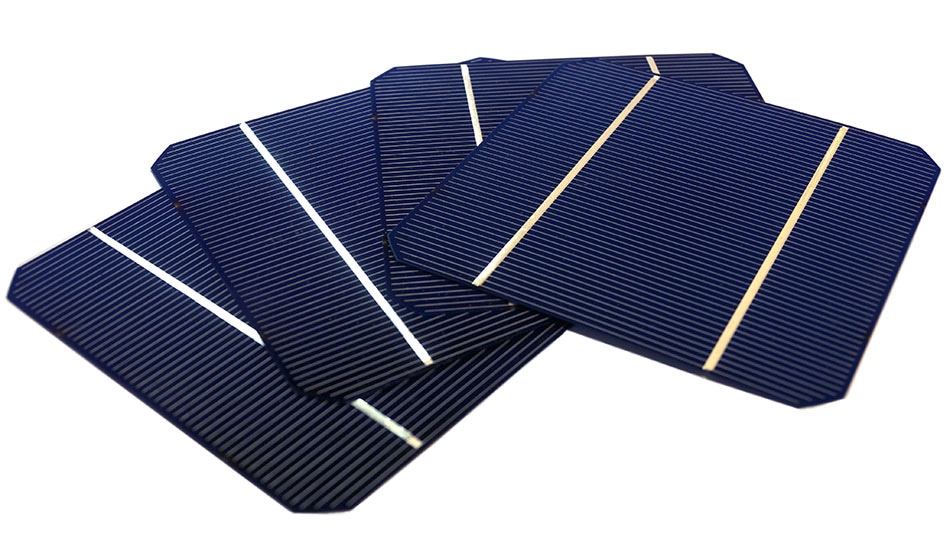Just a few years ago, researchers developing organic thin films to generate solar power considered 10 percent power conversion efficiency a lofty goal; but now a joint team of international researchers has produced thin film solar cells that are capable of a more than 13-percent efficiency, according to a new paper in the journal Advanced Materials.
 Image credit: Carlos Munoz/shutterstock
Image credit: Carlos Munoz/shutterstock
The international study team’s primary breakthrough was the development of a non-fullerene small molecule acceptor that has a greater tendency to crystallize into ordered structures. This conversion was thought to play a role in superior charge carrier transporting behaviors; as a result, causing more efficient power generation.
The researchers said they were able to engineer a more efficient acceptor molecule by exchanging phenylalkyl side chains in an indacenodithieno[3,2-b] thiophene-based non-fullerene acceptor (ITIC) with basic linear chains, forming the C8-ITIC molecule. This molecule was then combined with a fluorinated analog of the donor polymer PBDB-T to create bulk-heterojunction thin films.
"By changing the chemical structure of the organic compound, a promising boost in efficiency was successfully achieved in an already high-performing organic solar cells" study author Xuechen Jiao, materials science researcher at Monash University, said in a news release.
The study team said they were able to acquire morphological data on pure and blended thin films by performing grazing incidence wide-angle X-ray scattering (GIWAXS) measurements at the Australian Synchrotron.
“GIWAXS gave us information about how the donor and acceptor molecules crystallized and aggregated within the thin films, as well as the orientation of the crystallites with respect to the substrates,” Jiao said.
GIWAXS is commonly used in for looking into crystal structures of thin films of conductive polymers, like organic solar cells and organic transistors.
The intensity of beam at the Australian Synchrotron provides a super high flux, that means information can be acquired in about three seconds compared with conventional XRD (x-ray diffraction) which takes about an hour. Changes in color in two-dimensional GIWAX patterns represent changes in diffraction intensity which allow you to see how the unit cell changes.
Xuechen Jiao
In the study, researchers used GIWAXS on single-component thin films made from ITC, C8-ITC, PBDB-T and PFDB-T polymers. The best power conversation was seen when C8-ITIC with donor polymer PFBDB-T. The study team concluded their results were achieved due to C8-CTIC molecules having a greater tendency to crystallize into ordered 3D structures.
The new report also described a novel process to create the non-fullerene acceptor. Non-fullerene acceptors are seen as having great promise for solar power generation because of their extended light absorption, and another recent study revealed how a sandwich of PBDB-T and ITIC polymers could produce a solar power conversation efficiency of greater than 13 percent.
The "meat" is an active layer that takes in sunlight and converts it into electricity. The "bread" layers are made up of electrodes that transport any produced electricity. The objective of this study was to make a solar cell that could absorb light across as wide a spectrum as possible using various materials that work together well.
This study team worked on the transporting layers of the 'bread' and was capable of success by establishing a design system referred to as a FRET-based solar cell. FRET, or Förster resonance energy transfer, is an energy transfer system first identified in photosynthesis, the process by which plants use sunlight.
Employing a new polymer and non-fullerene blend with squaraine, the team transformed greater than 10 percent of solar energy into power. The study team said they could probably create a cell with 13 percent efficiency using other non-fullerene systems.
Disclaimer: The views expressed here are those of the author expressed in their private capacity and do not necessarily represent the views of AZoM.com Limited T/A AZoNetwork the owner and operator of this website. This disclaimer forms part of the Terms and conditions of use of this website.